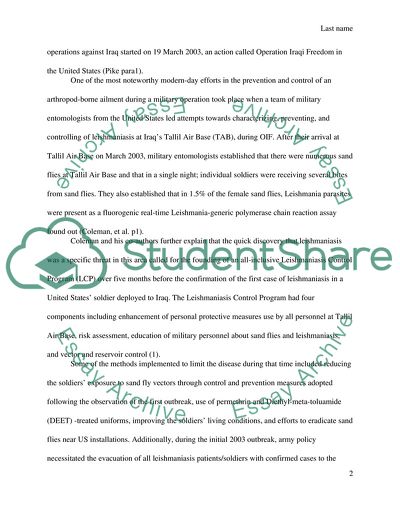Cite this document
(Infectious Complications as a Result of Military Operations Research Paper, n.d.)
Infectious Complications as a Result of Military Operations Research Paper. https://studentshare.org/health-sciences-medicine/1741963-leishmaniasis-and-its-effects-on-us-troops-during-oif-2003
Infectious Complications as a Result of Military Operations Research Paper. https://studentshare.org/health-sciences-medicine/1741963-leishmaniasis-and-its-effects-on-us-troops-during-oif-2003
(Infectious Complications As a Result of Military Operations Research Paper)
Infectious Complications As a Result of Military Operations Research Paper. https://studentshare.org/health-sciences-medicine/1741963-leishmaniasis-and-its-effects-on-us-troops-during-oif-2003.
Infectious Complications As a Result of Military Operations Research Paper. https://studentshare.org/health-sciences-medicine/1741963-leishmaniasis-and-its-effects-on-us-troops-during-oif-2003.
“Infectious Complications As a Result of Military Operations Research Paper”. https://studentshare.org/health-sciences-medicine/1741963-leishmaniasis-and-its-effects-on-us-troops-during-oif-2003.


